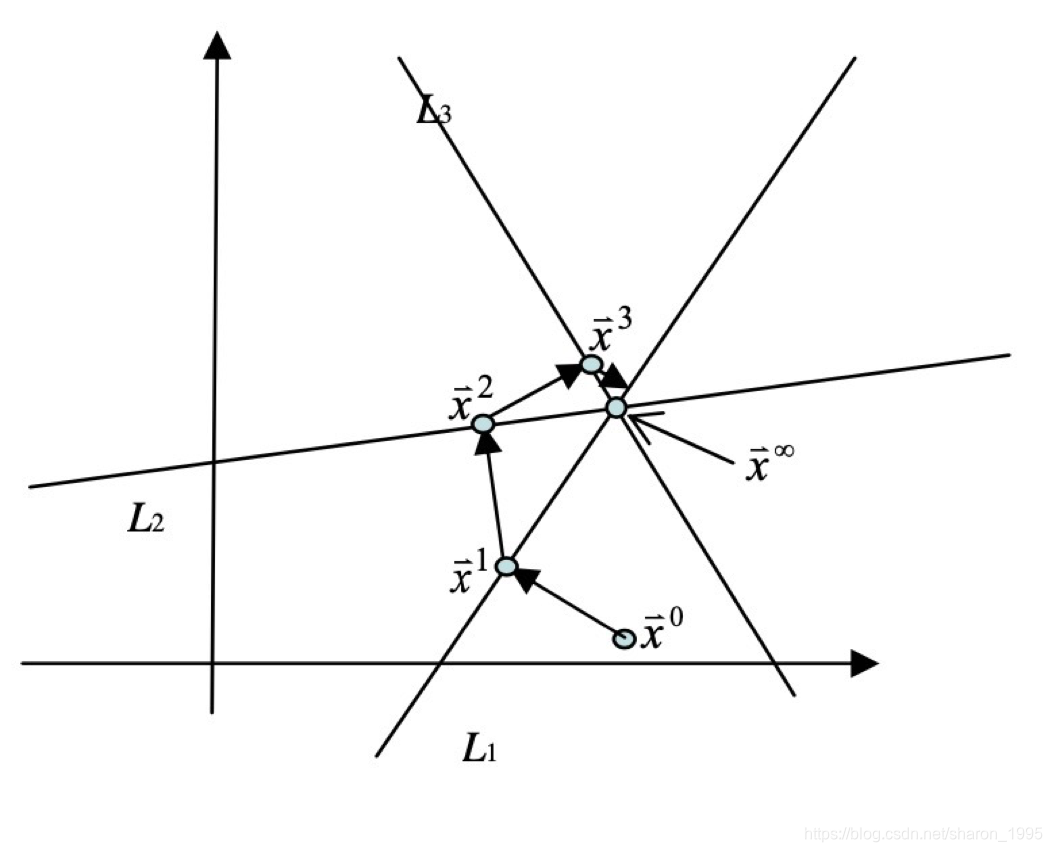0 说明
本文是基于matlab实现的最简单的迭代重建算法,当然,基于这个算法可以做很多优化。
1. fomula
迭代方法,其实说来都比较简单,最关键就是怎么从当前的x得到下一步的x。
Algebraic reconstruction technique is all about a system of equations which is
Ax = p
In this formula, x = [x1, x2, …, xn]T , p = [p1, p2, …, pm]T , where x is one-dimensional vector of n elements, each representing the pixels of a certain 2-D object, p is one-dimensional vector of m elements, each representing a measurements taken at a certain detector in a certain projection direction, A is called the projection matrix and each value in this matrix called a projection rate defines the contribution of a specific pixel to a specific projection value.
in general medical imaging applications, A is so large that the entire matrix cannot be stored in the computer at the same time. In the process of solving the equations, the value of that row of matrix A is generated only when needed and released immediately after used up. Based on this limitation, some algorithms,for example, diagonalizing or triangularizing matrix A, are not applicable. In fact, any algorithm that needs to change matrix A cannot be used.
Let’s focus on the implementation of the iterative reconstruction algorithm. Look at the following formula, which is basically the same as the ordinary gradient descent algorithm, where lambda is our relaxation factor determining the convergence rate.

2 Situations of different projection data
The entire iterative process can be seen in the two figure on the right. x0 is an arbitrary initial value. The first step is to project the point x0 vertically to L1 to get the new value x1. The next step is to project the point x1 vertically onto L2 to get the new value x2, and so on. Each step is to project the current estimated point onto the next straight line so that it satisfies the next equation. Eventually, this algorithm will converge to the solution of the system of equations.
下图是相容方程组,即针对方程组是有一个精确解的。迭代次数足够时,能够得到一个收敛值。

If this system of equations is incompatible, this algorithm will cause the “solution” of the system of equations to jump back and forth without converging. one iteration is defined as all equations are accessed by the algorithm once.
方程组不相容时,就会出现如下状况,在迭代次数到一定数值后,我们会在中间的三角形区域内一直跳来跳去。这代表三角形区域内任何一个点都是该方程组的数值解,比较好的方法是我们取得几个解,然后做一下平均。

上面两种不一样的投影数据,第一种明显是更好的。这里有一个问题值得注意,实际操作中应该尽可能的让我们的projection data靠近第一种。
3 implement
one iteration之后的图片:

这是基于90个angle得到的投影数据,然后通过泊松分布加入噪声后,再进行迭代重建后得到的图片,可以发现,这时图片非常模糊。

ground truth 是我们的原始图片,第二排的两张是将fbp重建的图片和迭代200次后重建的图片进行比对。
The figure on the left is rendered after one iteration, and it is still blurry compared to the original image. The figure on the right is based on the projection data of 90 projection angles, which are reconstructed using filtered back projection and iterative reconstruction techniques. We can clearly see the difference between the two algorithms. The edge of the image after the filtered back projection reconstruction is clearer and the noise is greater, and the image obtained by the iterative reconstruction technique is smoother and more blurred. We compare the mean square error and structural similarity of the two methods. The numerical display shows that ART is closer to the original image, but it has a lot of shortcomings, as explained above.
4 contrast
- 首先,看一下迭代次数改变后,均方误差还有结构相似性的一个变化曲线。

图片有点不是很清晰,需要看仔细一点,可以发现在迭代次数超过一定的数值后,均方误差不减反增。
Based on my personal understanding, the possible reason is that there are only 90-angle projection data, and the complexity of the projection data is less than the complexity of the image to be reconstructed. after a certain number of iterations, because of the excess expressive ability of the model, it will train some features that can only meet the projection data but not the original image, which will lead to a increase in mse. - 再看一下fbp和art的一个比对。整个图像来看可能看的不是很clear, 所以我单独将image matrix的其中一条直线plot出来了。这时对比就很清晰了。

左边是fbp和原始图片比对的曲线,右边是art和原始图片比对的曲线。两种算法个有优劣,可以根据需求选择不同的算法。
The difference is very obvious. The fbp image has larger fluctuations and ART is more stable. Although fbp fluctuates greatly, there is no loss of energy. Observation of the ART curve can clearly find that although it performs better in a smooth place, there is a big gap between the curve of the original image at the peak and this will cause image details Lost.
5 写在后面的话
非常感谢各位jmm和xdm能看到这,本人研究生萌新,方向医学图像重建,欢迎有兴趣的朋友们一起交流学习。
如果对filtered back project 算法不太了解的话,请查看:
https://blog.csdn.net/sharon_1995/article/details/109454562
如果想简单了解x-ray,请查看:
https://blog.csdn.net/sharon_1995/article/details/109652834





















 1442
1442











 被折叠的 条评论
为什么被折叠?
被折叠的 条评论
为什么被折叠?








